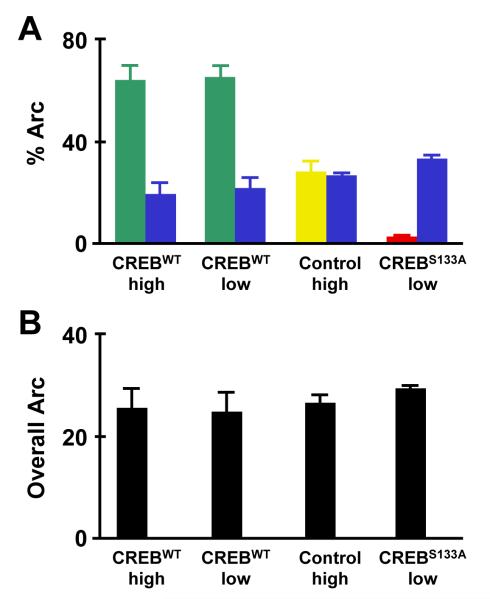Fig. 1.
Relative CREB activity influences the competitive recruitment of neurons into a memory trace. (A) Distribution of Arc-positive neurons varied according to CREB manipulation. Arc-positive nuclei were more likely to be in neurons infected with a virus overexpressing wild-type CREB (CREBWT) (green bars) than in noninfected neighbors (paired blue bars), whether the mice were trained with high or low shock intensities. In contrast, Arc-positive nuclei were equally likely to be in neurons with (yellow bar) and without (paired blue bar) a control virus that does not express CREB. Arc-positive nuclei were less likely to be in neurons with decreased CREB function (neurons infected with a virus overexpressing CREBS133A; red bar) relative to noninfected neighbors (paired blue bar). (B) Irregardless of the conditions listed above, the percent of cells expressing Arc-positive neurons remained constant, regardless of virus used (control, CREBWT, CREBS133A) or training intensity (high or low) (modified from Han et al., 2007).

